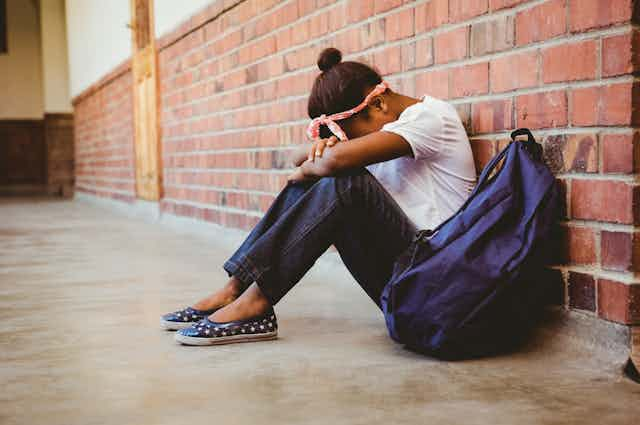In the academic year 2020-21, there were 1,198 instances of racially motivated bullying reported in Scottish schools – up from 409 in 2016-17. These are the highest recorded figures to date.
My research, carried out with colleagues, explores the impact of racist bullying like this – bullying motivated by prejudice against someone’s race, ethnicity, culture, citizenship or religion.
We conducted what is known as a systematic review: examining existing research studies to look for trends and patterns. We pulled together the results of 73 existing research studies on racist bullying from around the world. We wanted to know more about what happens to young people who experience racist bullying.
We found that racist bullying increases the risk of poor mental health. It can cause loneliness and lead children to drop out of school. It can result in alcohol and substance misuse.
We also found that young people feel their teachers are dismissive of racist biases and stereotypes. The way teachers handle complaints about racism could be critical for children and young people’s mental health.
Trying to cope
Children and young people often try to cope with racist bullying by “filtering out” incidents and trying to protect themselves with indifference. They try to laugh it off, taking insults in a joking manner.
But 18 studies included in our review found that racist bullying contributes to depression, anxiety, lower self-esteem and feelings of anger. These effects have been found among teenagers and younger children. In some cases, racist bullying can be so severe that it is linked to PTSD symptoms and suicidal thoughts.
Our research found that there are several factors that could influence whether a child gets bullied because of their race or cultural identity.
Racist bullying is strongly influenced by ethnic, racial and religious stereotypes that have developed as a result of negative media representations of ethnic and religious minorities. For example, media representations of refugees as illegal migrants or “economic refugees”, whose aim is to take advantage of benefit systems, influence how children from migrant backgrounds are treated at school.
Some children bullied due to their race, ethnicity or culture at school also reported experiencing racism and discrimination in other situations, such as by strangers in public places.
Markers of difference, such as speaking a native language at school, can also increase the risk of racist bullying. For example, one study reported that students who were using Spanish in a school in Texas, USA were told that they were “strange” and that they should “go back to Mexico”.
Children and young people from ethnically diverse backgrounds are also more likely to face racist bullying in schools where they are in the minority. The numerical difference only serves to accentuate the power imbalance between racial and cultural majorities and minorities.
The role of schools
The school environment can make a difference. A study included in our review found that students were less likely to face racist bullying in schools where teachers showed support for cultural diversity. These findings show the important role teachers play in promoting positive intercultural relationships and inclusion and reducing prejudice.
However, the most worrying finding emerging from our research was that young people did not feel supported by their teachers. In 16 studies included in our review, six of which were conducted in the UK, young people and parents reported that they felt teachers were dismissive of racial bias or stereotyping.
Recent work by Scottish charity the Coalition for Racial Equality and Rights supports this finding. It shows that only 17% of schools in Scotland recorded one or more racially motivated bullying incident over 2020-21. Given that 61% of schools did not report bullying of any nature at all, it seems likely that bullying in schools is being overlooked.
Children and young people who are bullied due to their race or culture may feel that their teachers have double standards in dealing with incidents. In one study conducted in Austria, an eight-year-old child said that when ethnic majority children complained about bullying they were taken seriously, while when he was bullied it would be dismissed as “just play”. This suggests a link between institutional racism – the attitude of the school towards the children – and the racist bullying they experienced from their peers.
Schools should have clear policies against racist bullying to protect the mental health and educational development of children and young people from minority groups. But no policy will be effective without also addressing the structural racism within schools. This means recognising the lack of diversity among teachers and in the school curriculum, and the attitudes held in schools and in the wider community.

